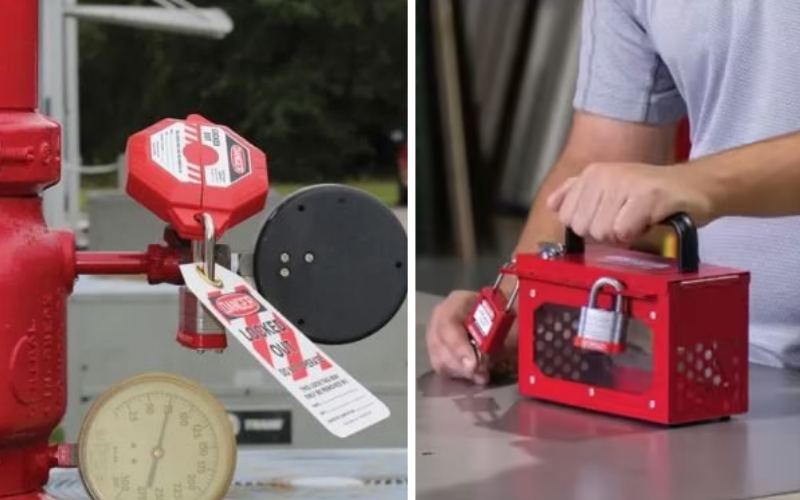
Lockout tagout procedures are designed to restrict employee access to electrical generation, hazardous energies, and other potentially dangerous equipment during routine maintenance, installation, and inspection. The lock physically prevents the unauthorized worker from accessing the equipment or turning the machine on during this time, while the tag tells the user that this area or machine is temporarily off-limits.
But not just any lock or tag will do. You need to choose lockout tagout (LOTO) equipment to prevent unauthorized individuals from accidentally injuring themselves or other members of your team during the maintenance process in areas where electrically-energized equipment or other potential hazards are present.
The Occupational Safety and Hazard Administration (OSHA) and National Fire Protection Association (NFPA) have set requirements for this equipment to help safety supervisors control access to energized pieces of equipment. The lockout tagout standards vary based on the work environment.
The OSHA standard, CFR 1910.147, requires the lockout tagout padlock to be durable and substantial. The padlock material must be able to withstand the usage environment, including possible changes in temperature, as well as considerable force. It should be made with metal or stainless steel and feature a design that won’t break apart even under stress.
The padlock must also be visually identifiable to all employees to distinguish it from its surroundings. The tag should include information about the lockout, including the name or title of the person who put it there. The device must be designated solely for safety lockout tagout procedures.
The NFPA code, 70E-2018 Article 120, goes into more detail. Many of the requirements are the same, but there are a few differences to keep in mind.
The lockout tagout padlock must require either a unique key or combination. The device is permitted to be just a lock if the lock is easily identifiable as a piece of lockout tagout equipment and not just an ordinary lock. It must also list the name of the person who installed it.
The tag used should also contain a statement or warning prohibiting any employee from disconnecting or removing the device without the express authorization to do so by the person(s) who initiated the LOTO in the first place. Regardless of whether a lock or combination is used, the key or code must remain with the person installing the lock or the person in charge of site safety. Other employees shouldn’t have access to the key or code. The equipment should be designed to prevent unauthorized key duplication.
Once you have met these requirements, you should consider the device’s application. It must be tailored to the specific piece of equipment and easy for the installer to use and secure in the field.
The Accuform Portable Group Lockout Box KCC617 is a slot style lock box with 12 slot holes on top lid, allowing workers to secure individual padlocks (sold separately). This sturdy steel box is available in red or yellow
The Accuform STOPOUT Standard Lockout Kit KSK234 is a great starter kit option since it includes a lockout box and everything you need to lockout tagout hazardous pieces of equipment. This lockout box is manufactured using a strong and durable polyethylene material.
The Accuform Chain Lockout Kit is a slightly less expensive option to lockout an area being serviced. It comes with: a 4-foot red steel chain, two steel padlocks, two lockout scissor hasps, five lockout tags and plastic ties.
Contact PK Safety to learn more about this safety equipment and how it can help you and your team stay safe in the field.
